Russia's Syria intervention: One month in
- Published
- comments
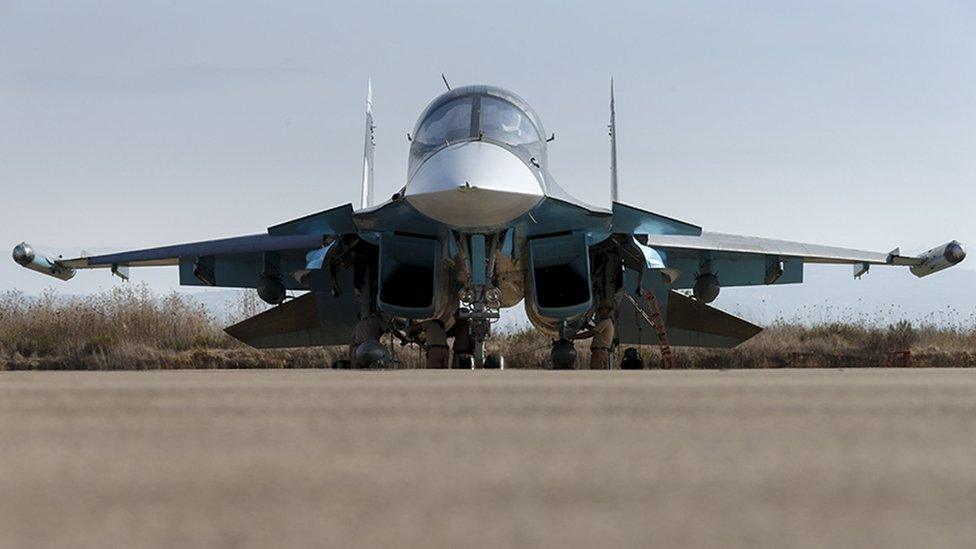
The deployment of a Russian strike force of 34 combat jets and 21 helicopters showed how billions invested in the armed forces by President Vladimir Putin had paid off. Within days of arriving they were flying attack missions, and have now clocked up something like 1,000 of them.
President Putin wanted to show the world that he would bring a zeal to the battle against militancy in Syria that had been sorely lacking under the American-led coalition.
So, whereas the US-led air forces have averaged around six strikes per day during the past year (actually less during this last month) the Russians started with eight, were soon up to a couple of dozen, and have mounted as many as 94 strikes in a single day.
They've taken advantage of the close proximity of their Syrian base to the targets (sometimes just ten minutes' flying time away) to mount two or three missions per day with some aircraft, while a US jet travelling from the Gulf, refuelling multiple times, might fly two or three operational missions in a week.
Having advisers with the Syrian Army on its various fronts, the Russians have had no shortage of targets to prosecute (not initially anyway) because they have so many eyes in place.
So Russia has rained down destruction, but to what end?
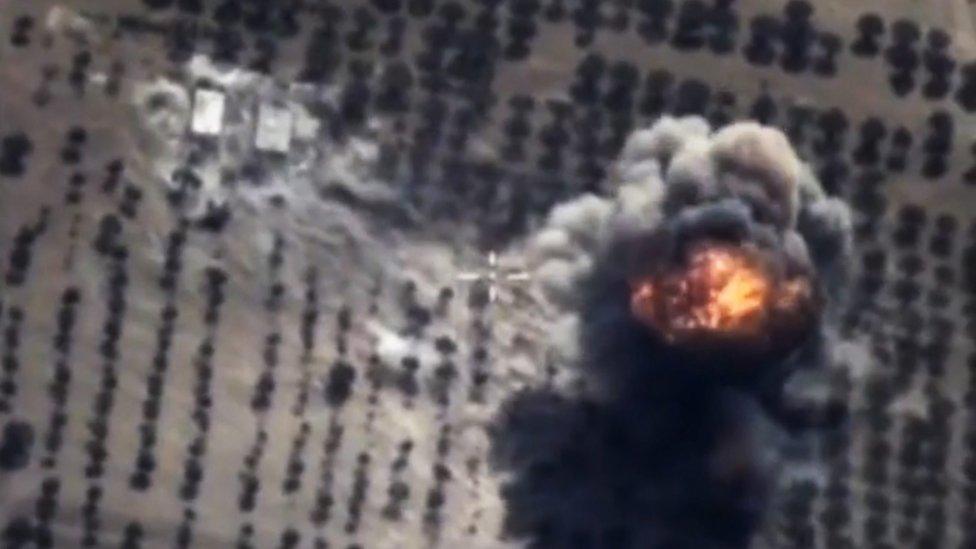
Russian aircraft have now undertaken more than a thousand sorties over Syria
American officials' analysis and independent journalists, like the Bellingcat investigative website, external, come up with similar answers: that more than 90% of the bombs have been dropped in places held by groups other than the so-called Islamic State (IS). Of 60 Russian Defence Ministry strike videos with geo-location data examined by Bellingcat, only one was in an area where IS operates.
Russian officials have themselves been inconsistent about targeting. President Putin last week described the distinction between "moderate and immoderate" terrorists as, "playing with words".
While foreign minister Sergei Lavrov has, at times, suggested that elements of the Free Syrian Army (a loose-knit association of groups, many of which have been hit by Russian air attacks) could join in peace talks.
What an examination of the places actually hit shows is that they are heavily clustered around areas where the Syrian regime has sought to reverse recent losses and has, for the past fortnight, been launching ground offensives.

Russian forces in Syria
12 Su-25 ground-attack aircraft
12 Su-24 bombers
6 Su-34 strike fighters
4 Su-30 fighters
21 helicopters, including 16 Mi-24 attack helicopters

Most Russian strikes have therefore taken the form of "fire preparation" for pushes by the Syrian Army, or close air support once these operations have started.
Which rebels are there matters less than that they are dangerously close to regime heartlands and must be pushed back.
So if that's the way Russia picks its targets, are they accurate?
While almost all bombs or missiles dropped by the US-led coalition are precision guided (usually by laser or satellite), very few Russian ones are.
US Defence Secretary Ashton Carter has said that more than 80% of the Russian bombs are unguided or "dumb" bombs and this estimate tallies closely with independent observations of video footage.
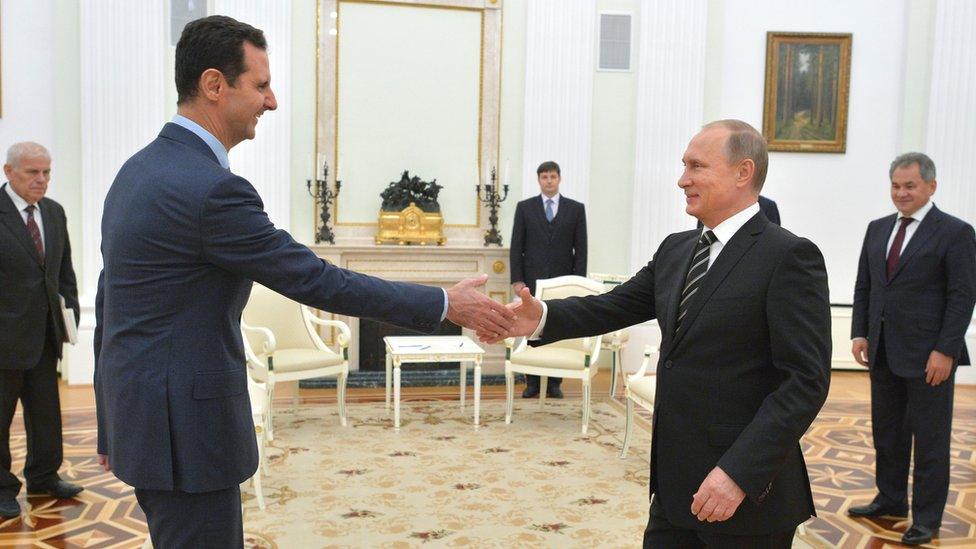
Syria's President Bashar Assad met President Putin in the Kremlin on 20 October
Typically US "precision" bombs have a circular error probable (the radius around the aiming point in which 50% or more will fall) of eight-to-12 metres. With unguided or dumb bombs that increases to 50-100m.
Furthermore, the Russians have been dropping cluster munitions that western air forces would shun for their indiscriminate effect.
Even using precision weapons the US and its allies have killed an estimated 600 plus non-combatants in Syria and Iraq since August 2014 due to poor intelligence or weapons malfunction.
Using much less accurate weaponry, experts believe the rate at which the Russians are killing innocents is likely to be much higher, and of striking the right aiming points lower.
"Russian strikes are thankfully far from being precise," says Col Abdel Jabar al Okaidi a Free Syrian Army commander operating near Aleppo, "which is to our advantage".
Rebel groups and NGOs have claimed hundreds of civilian deaths and seven hospitals hit.
Enormous force
Russian counter-claims that no civilians have been killed and all missions have hit their targets are simply not credible. It's also obvious that their enemy will adapt and returns diminish.
"The targets will be increasingly different and complex," military analyst Col Mikhail Timoshenko acknowledged to Gazeta.Ru.
It may be that they are hitting so many targets, that even with less accuracy, they are doing more damage than the Americans.
Maybe, but we know that civilians living in the areas where these attacks have been most intense, are fleeing in droves
The UN says 120,000 were displaced from Aleppo, Hama, and Idlib provinces between 5 and 22 October: the places where most Russian strikes have taken place, where Syrian Army ground pushes have happened, and where all these people have fled are one and the same.
So far though the regime's gains have either been small (advances of several kilometres) or reversed by rebel counter-attacks.
Even an apparently successful push towards the encircled airbase of Kuwairis in Aleppo province (reportedly spearheaded by Iranians) has been reversed by an IS counter-attack.
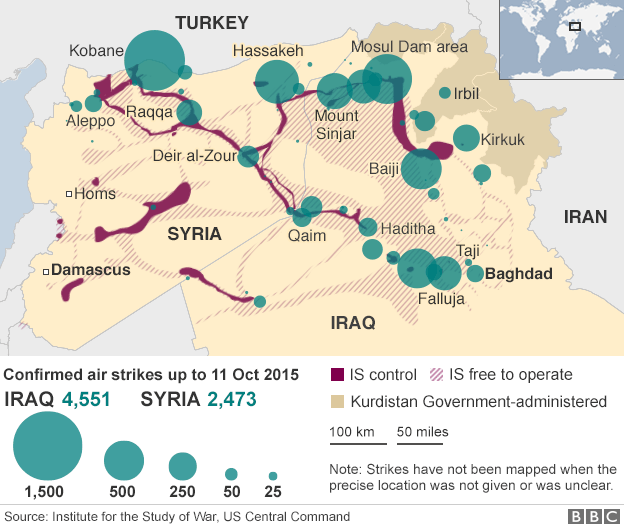
Even if the Syrian Army achieves a breakthrough its strength has fallen due to desertion and the collapse of many units.
And it is open to question whether Assad's forces could hold on to any large-scale gains: they are simply stretched too thin.
Shortly before the strikes started Mr Putin told CBS News "there is no other solution to the Syrian crisis than strengthening the effective government structures" and agreed when it was put to him that he intended to save President Assad.
After one month of air attacks, we can see that Russia has tried to do precisely this: strengthen the Assad regime and its forces.
At the same time there is a cost, in terms of displaced or killed people. Russia's actions have ramped up the war, but so far with no resolution in sight.
In one month Russia has changed a great many calculations in the Middle East. It has deployed a military force to Syria swiftly, and it has brought enormous force to bear. But the human cost of this is becoming clearer.
- Published28 March 2018
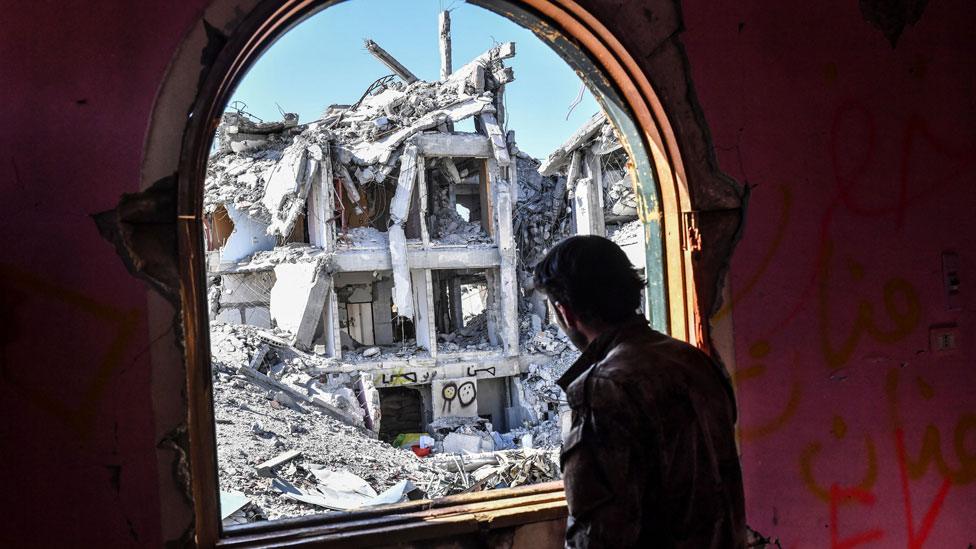
- Published23 October 2015
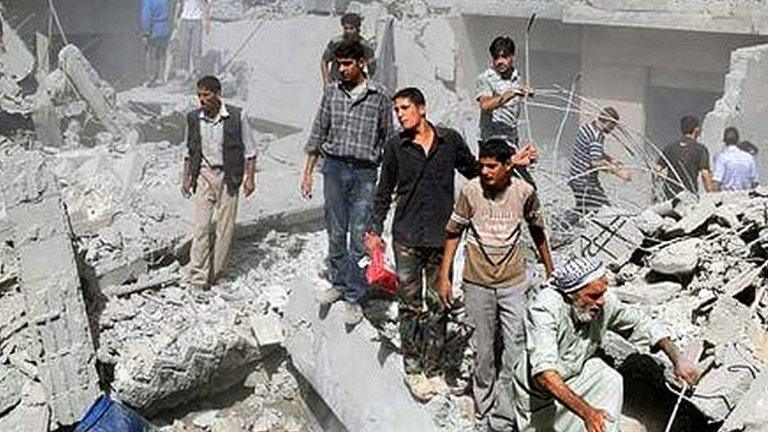
- Published26 October 2015